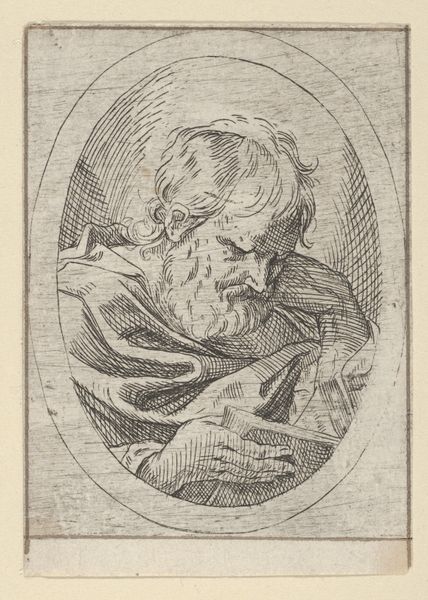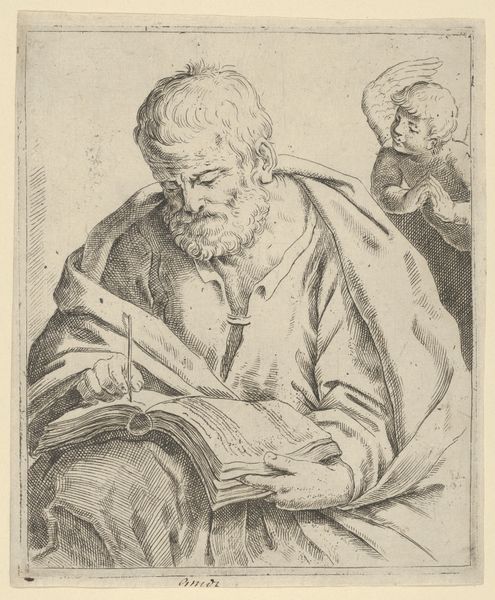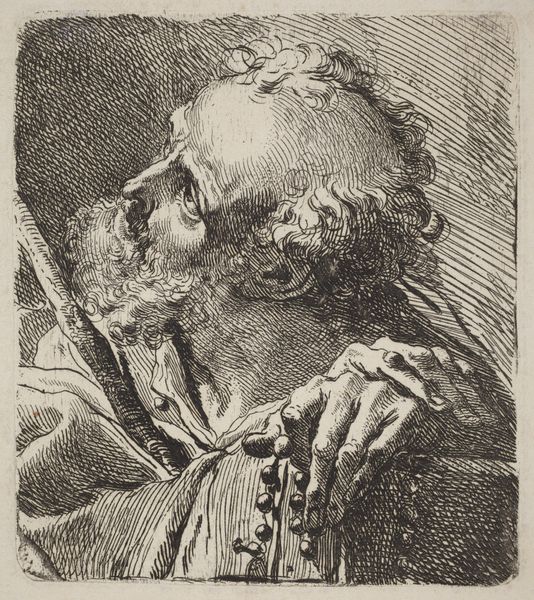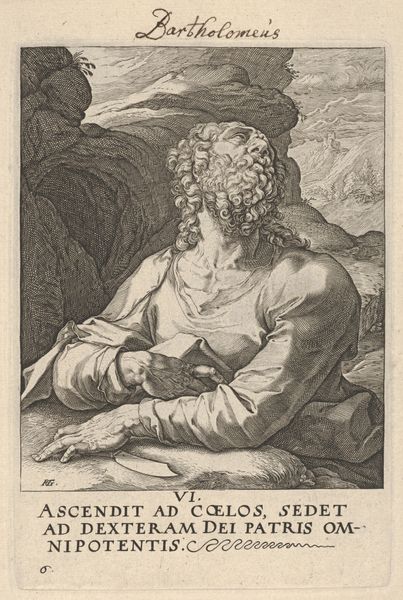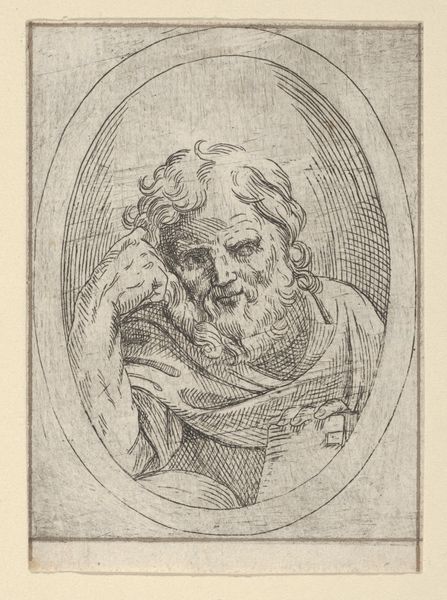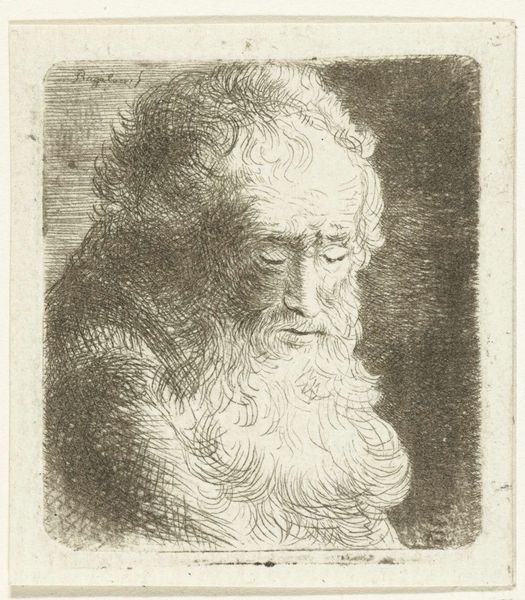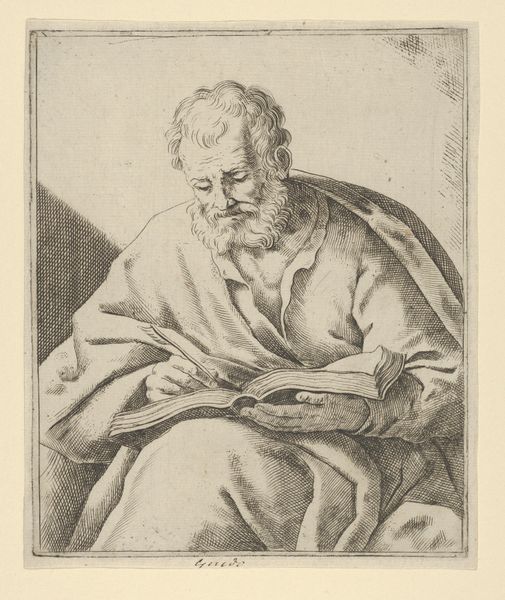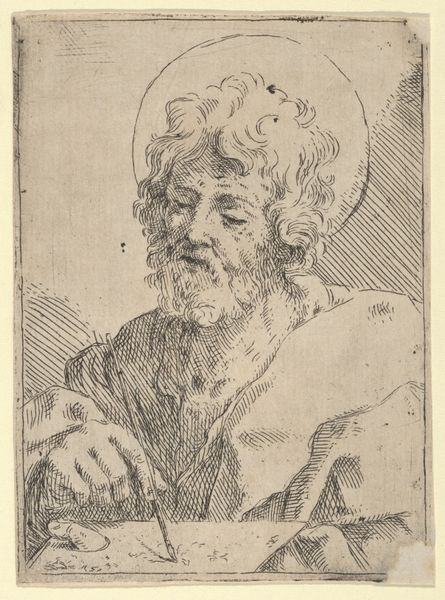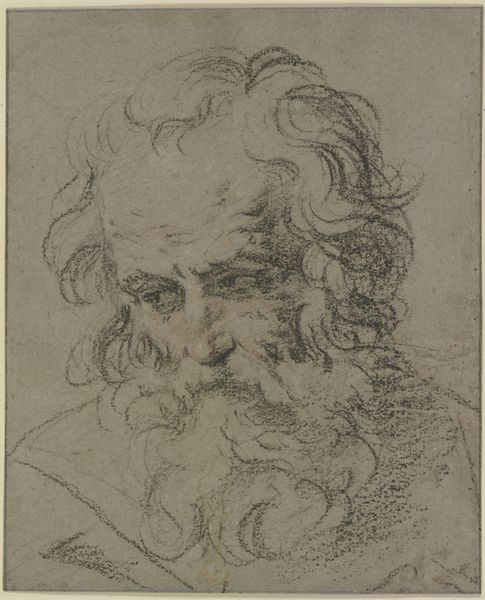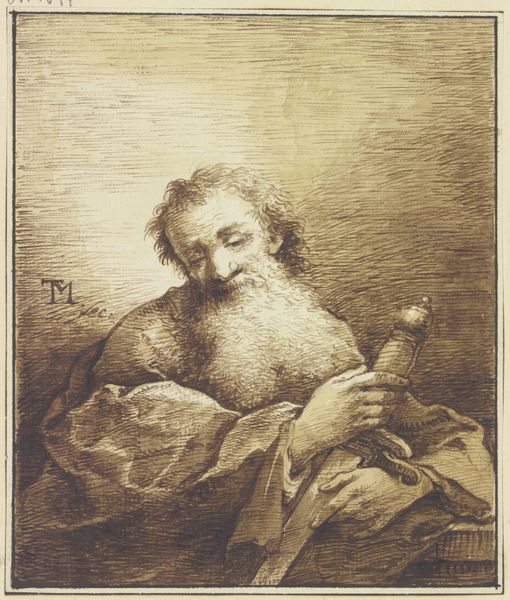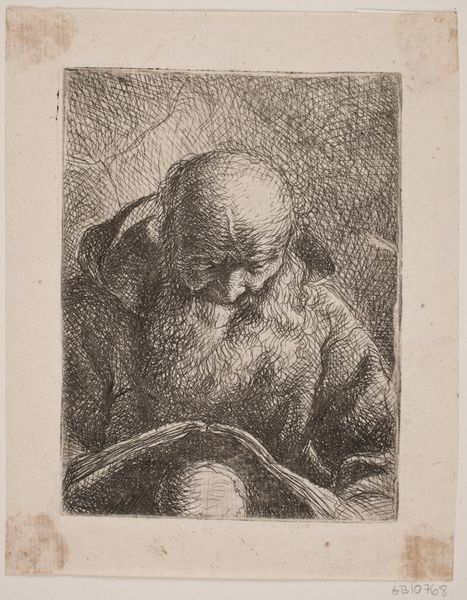
print, etching, paper
#
portrait
#
baroque
# print
#
etching
#
paper
#
history-painting
Dimensions: plate: 12 x 9 cm (4 3/4 x 3 9/16 in.) sheet: 13.4 x 10.6 cm (5 1/4 x 4 3/16 in.)
Copyright: National Gallery of Art: CC0 1.0
Curator: Right now, we're looking at a c. 1620s etching called *Saint Paul*, crafted by the French artist Laurent de La Hyre. The print presents Saint Paul deeply engrossed in study. What are your first impressions? Editor: A contemplative silence, almost weighty, descends from the image. He looks absolutely absorbed; everything pulls inward, toward the scripture before him. The details are rendered in these almost frantic, scratchy lines that are so baroque in their execution and add so much to the aura of zealous scholarship. Curator: Precisely! There’s a palpable intensity. The etching technique allows for this incredible density of line, really building up the shadows and textures of Saint Paul's beard and robe. Notice how the light catches his forehead and hands, drawing our eye to the act of reading and writing. Editor: And the architectural elements are key here as well; see how stark and sparse everything surrounding St. Paul is. Look too at how he’s holding what appears to be a large blade or possibly a burnishing tool with his right hand—almost like a symbol of cutting away worldly concerns to focus on higher truths. And the blade also may relate to St. Paul's martyrdom by sword in Rome. What's the text below the artwork tell us about the circumstances of its creation? Curator: The inscription tells us "L. de la Hyre in et fe."--which confirms that Laurent de La Hyre invented the design and engraved it himself. Further the script reads, "Herman Weyen excud. CumP.Regis", informing us that Herman Weyen both produced this artwork, and enjoyed the protection of Royal privilege when he did so. Editor: The decision to represent Paul with such gravitas—and that looming writing implement—suggests more than mere illustration. La Hyre seems to be inviting us to contemplate Paul’s legacy of devotion. A legacy still unfolding, in a sense. Curator: It also hints at the performative aspect of faith and scholarship. Paul isn't simply reading; he’s actively wrestling with the text, translating it, making it his own, one could argue. He's becoming something more than an observer. Editor: Looking at how the image balances both the weight of historical portrayal, while capturing what feels to me an inner turmoil and resolve... I’m left with a distinct impression of both reverence and the demand for critical personal commitment. Curator: That feeling of personal commitment really does endure! This is, to me, how art can bring us closer, centuries later, to these complex figures.
Comments
No comments
Be the first to comment and join the conversation on the ultimate creative platform.

